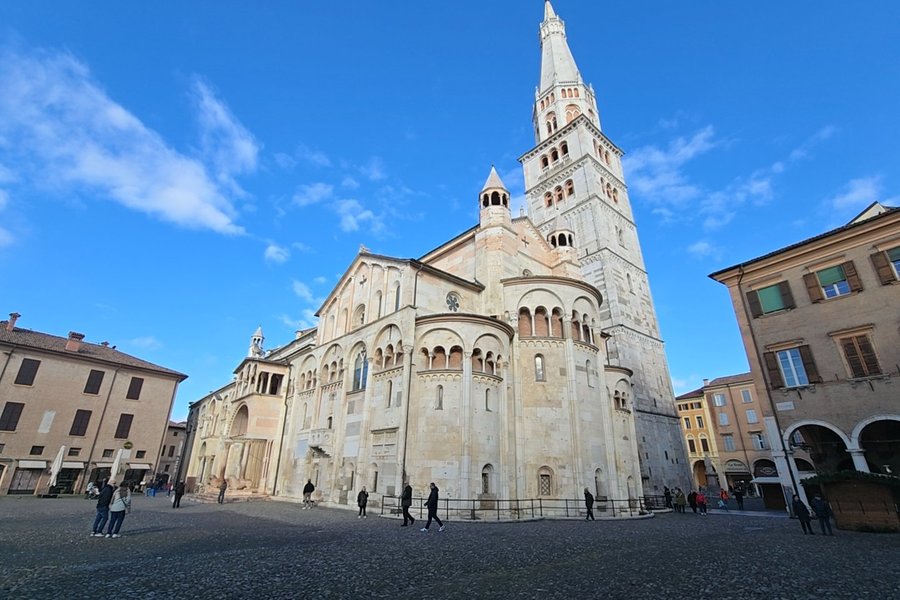
Modena was a daytrip visit from our base in Bologna. A 30-minute train trip. The previous review by Michael in 2023 is spot on and there is little I can add. We had the good fortune of a clear day in a week of light rain when visiting the Cathedral located in the Piazza Grande. It is only a 5 - 10-minute walk from the Train Station. The main church was open for viewing; however the crypt and lower part of the church was closed to tourists at the time of our visit. The Cathedral and Bell tower were striking within the Square, and it appeared that the church was on a lean in comparison to the Bell Tower, but not sure if this is attributed to the level of the Piazza. Although the OUV is a small area contained within the Piazza itself, it is also a lovely town to wander an explore. In hindsight, we probably should have based ourselves here and day tripped to Bologna. Christmas markets were in the process of being set up around the Piazza on the day of our visit in mid-November 2025. There was no cost to enter the Cathedral or Crypt (when open)
An interesting footnote not specifically associated with the OUV, but located in Piazza Grande is the famous Ringadora Stone, a large block of marble that was used as a public forum (stage) in medieval times. It also was used to display bodies of unknown deceased persons, who were …
Keep reading 0 comments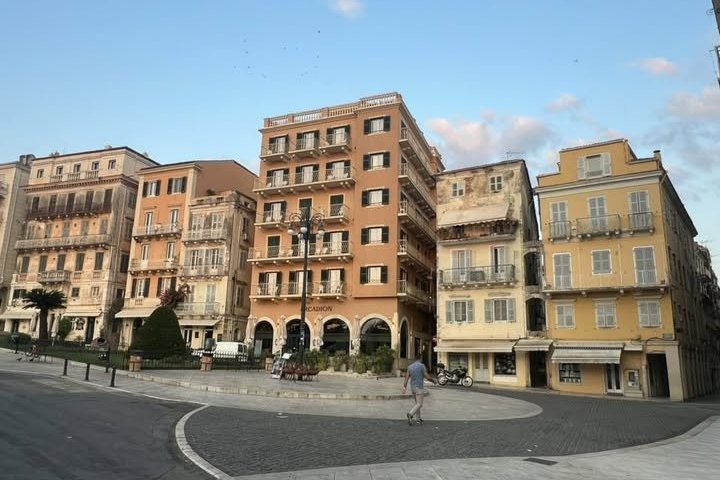
I arrived in Corfu by ferry from Sarandë in Albania, a short crossing across the glittering Ionian Sea. The ferry terminal stands some distance from the historic center, so I took an Uber to my hotel in the city. As we drove past the imposing New Fortress, its massive stone walls rising beside the lively old town crowded with cars and tourists, I immediately understood why Corfu is one of the most popular destinations in Greece, vibrant, historic, and full of summer energy.
Stepping into the Old Town, I was greeted by a burst of life. After dropping off my luggage at my hotel, conveniently located next to Spianada Square, I set out to explore. The area around the hotel felt surprisingly peaceful, shaded by trees and filled with the soft chorus of cicadas. But as soon as I walked toward the Liston, the atmosphere changed. The quiet charm gave way to crowds, lively conversation, and the sound of coffee cups clinking beneath the famous arcades. The Liston is one of the most elegant promenades in all of Greece. Built by the French in the early nineteenth century and modeled after the Rue de Rivoli in Paris, its graceful arches and lanterns lend Corfu a distinctly Parisian character. I enjoyed the lively scene and the excellent people watching, though the prices were unexpectedly high. Even a simple cup of coffee cost more than anywhere else I had visited. It was wonderful to see, but I quickly decided …
Keep reading 0 comments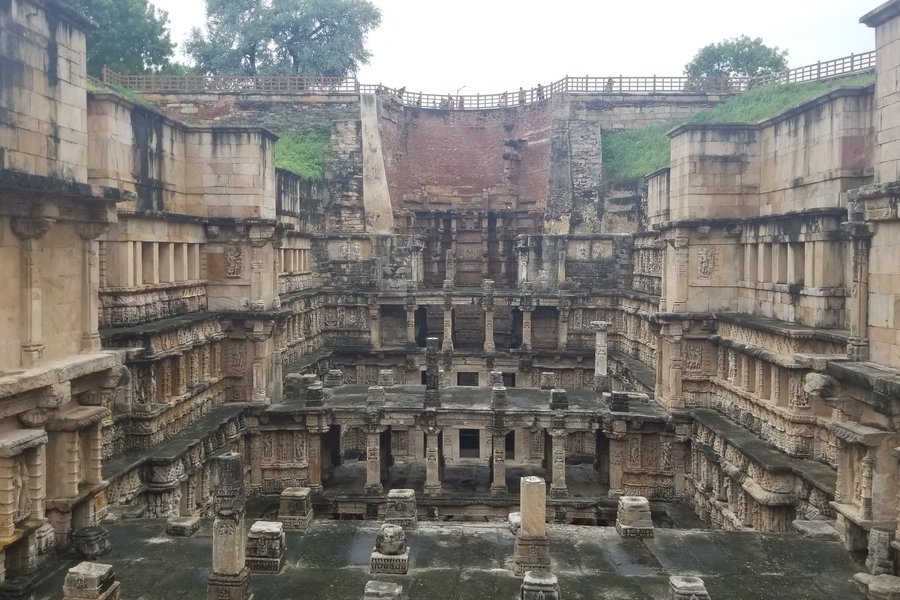
Rani-ki-vav (The Queen's Stepwell) is one of the best places in India to visit. It's not big but the small amounts you see are "massive" and will stay in your head for a long time. Most people would just do this as a daytrip from Ahmedabad as it's only 2h away but seeing that there are other enjoyable things in Gujarat I added it to my trip overall.
First off you MUST buy your ticket online which is rather annoying for us foreigners. I didn't have a local SIM card for the 3 days in India and my driver already went to lunch so he couldn't give me a hotspot. Luckily the security guard gave me a hotspot. I was then worried that foreign credit cards wouldn't be possible to purchase the ticket (which is often the case for Indian security on the websites) but that wasn't an issue. So I got the ticket and could enter. There was a whole rush of people trying to navigate this online purchase but I managed to finish off within 3 minutes.
After ending up inside it's only a short walk to the actual site. The park itself itself is nice but what's worthy to come here. I'll say it now that I did walk around the entire area, which includes a toilet, but mainly because my driver was still out for a while and the temple doesn't take long to see either. In fact most of the time spent here was taking …
Keep reading 0 comments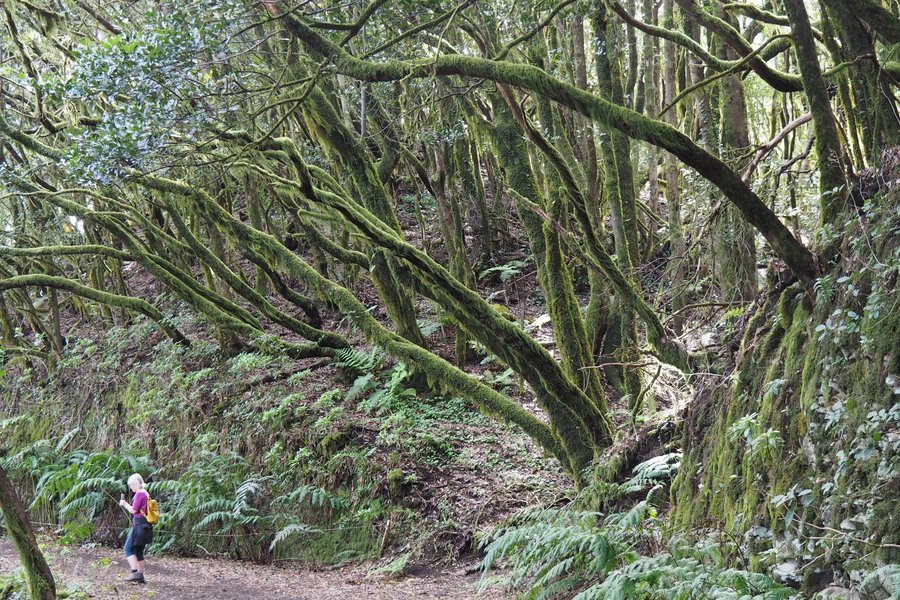
As mentioned in the introduction to this website's page, I'm surprised by the lack of interest in Garajonay National Park, as I personally found it extraordinary from a geological and botanical perspective, as well as thanks to the warm welcome of the local people. A true discovery.
We stayed in a charming hotel in San Miguel on the island of Tenerife. The plan was simple: just take the local bus to Los Cristianos and then catch the ferry to La Gomera. As mentioned before, the ferry trip is expensive: around €40 per person, but it's pleasant because you discover the island from a distance and at a leisurely pace. And you get to know the locals.
Once we got off the boat in San Sebastian, we rented a car to drive straight to Hermigua in the north of the island. Yes, as other WHS members have said, as soon as you leave San Sebastian on a road with a 45° incline, if I may say so, the scenery quickly becomes spectacular. We also stopped at the viewpoints because it was so magnificent.
We had booked a room in another charming hotel in Hermigua. We had followed the advice of the Guide du routard : Hermigua is a good starting point for hiking.
We chose to do a loop following the marked paths ns P8, P11, 37 and P2, so as to do the loop in one day with a picnic stop at the El Cedro campsite. There's a map of …
Keep reading 0 comments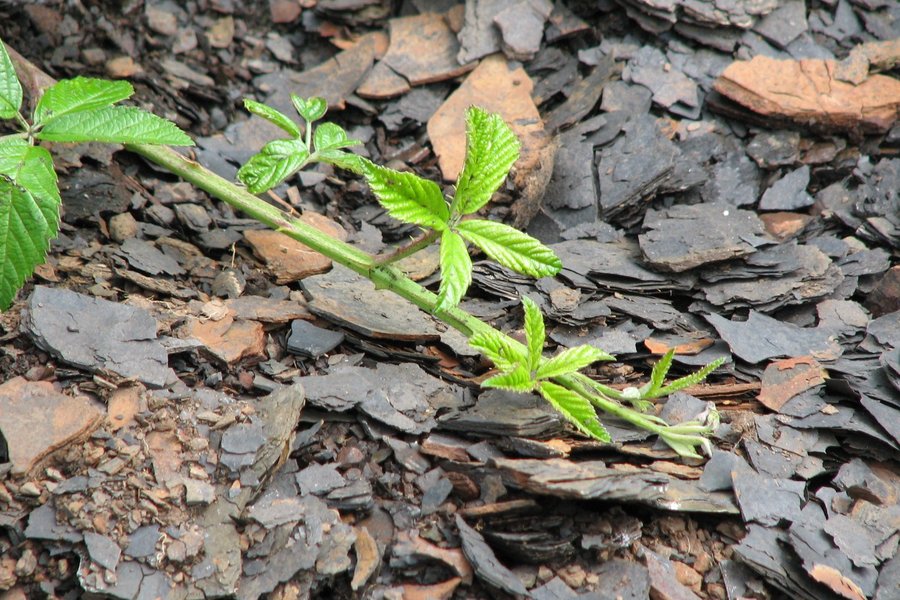
I am probably highly biased towards this site. I grew up in an area rich in fossils and have spent many hours of my life in damp quarries sifting through rubble looking for them, as well as countless more hours in museums looking at them. The Messel Pit is undoubtedly one of the most famous, important and productive fossil sites on Earth - it is crucial to our understanding of life in the early Eocene (~50 million years ago), particularly in regards to the evolution and rise of mammals. The Messel Pit was one of the WHS in Germany that I was most excited about visiting.
That said, if you are not a fossil enthusiast then fossil sites tend to be unimpressive to look at. The Messel Pit is no exception. Without the visitor centre it would literally be just a hole in the ground. The visitor centre is small and the €7 fee felt steep for what you get, although it is a nice introduction to the site and why it is so important. Regardless, I am personally more than happy to put some money towards protecting and developing a site as important as this. My German isn't great so I didn't do a tour, although I note that they do have a single public tour in English at 1530 on the first Friday of every month. The site was pretty easy to get to on the bus from Darmstadt, and they even run on Sundays.
While not part …
Keep reading 0 comments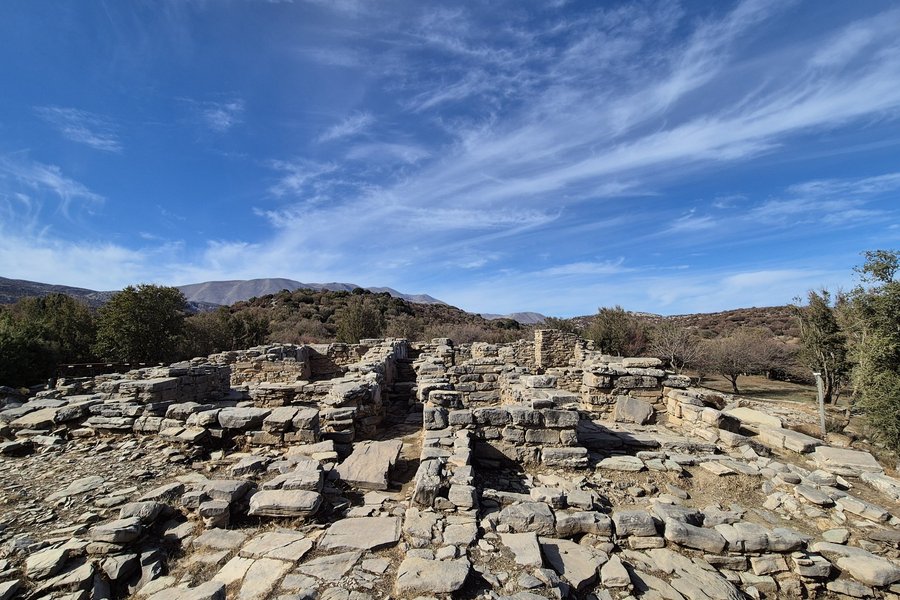
Zominthos was the surprise nominee when minoan palatial centres were inscribed in summer 2025. Greece had hesitated for years on that nomination between a single site (Cnossos) or a group of five, but Zominthos was never discussed I believe. It wasn’t even mentioned in any of my guide books, and for a good reason : it was only opened to visitors since mid of 2025. Thus visiting it became one of our main goals while staying in Heraklion in November 2025.
Zominthos is up in the Psiloris (Ida) mountain, set at 1200 m above see level. From Heraklion, it is a one hour drive on winding, narrow roads that stretch for (only) around 50 kilometres, on the road to the “Zeus cave”. I emailed the Ephorate of Antiquities in Rethymno a week before to confirm the opening days and hours and we eventually visited on a Sunday (open 9 to 15 on that day, closed on Mondays). It is completely fenced and you would see nothing from the outside if you came on a day when it is closed. The only facilities on site are a car park, a ticket booth and toilets.
It is the smallest of the six inscribed areas of the serial property and could be toured in less than 30 minutes. Why then did we enjoy it so much that we stayed there for more than twice that time ? The setting in the mountain is gorgeous, away from any village or main road. You hear …
Keep reading 0 comments
Napier is a detour when you’re doing a quick round of the North Island, but it was one of the places I was most eager to see on my New Zealand trip. On my approach from Rotorua, I even passed a sign “next gas station 130km”, which speaks of Napier’s remoteness. But the road that followed was very scenic. And at the end, there is this still busy port and bustling town with low-rise buildings. It has 66,000 inhabitants.
Parking is a bit of a headache, as almost every spot has to be paid for and they usually allow only 2 hours. But I was booked on the Guided Walk of Napier’s Art Deco Trust, which alone would last 2 hours. In the end I found out that parking was free after 2 pm on a Saturday, so I only had to pay a bit and could leave my car for the rest of the day.
We were a group of about 15 on the guided walk, led by two ladies of a certain age. First, we watched a presentation inside the lovely building of the Art Deco Trust, and afterwards, we walked a fair bit around town. The presentation gave us some background info on why Napier looks like it does nowadays. The city was struck by a strong earthquake in 1931, which not only resulted in the flattening of almost the entire city center (and ca. 260 deaths) but also lifted the land by 2 metres. The …
Keep reading 1 comment
Manono, Apolima and Nuulopa Island are located between the two main islands of Samoa. Manono is the easiest to visit and the most populated. Access is by the wharf on Northern Upolu Island - a few kilometers west of the main ferry terminal. Semi regular ferries go back and forth, or you can hire your own boat, which I did.
The island is not that large, about 6 kilometers in circumference. There is a path around it, which I walked. At a leisurely pace it took only an hour and a half. The island had homes and villages around the whole island.
The nomination says it represents a traditional way of living. As a casual observer and someone not too versed in Samoan culture, I didn't think the island looked that much different from the homes and villages I saw on Upolu Island. The main difference was that there are no cars or dogs allowed on the island, which made the walk pleasant. Like other places in Samoa, people were friendly and I didn't feel uncomfortable walking around (and basically crossing in front of everyone's home).
Not knowing enough on Samoan culture, I can't really comment on if these islands are WHS worthy. The walk around Manono Island and the twenty minute boat ride was a pleasant way to spend a few hours on my Samoa trip.
Keep reading 0 commentsTwobaconsandaboston
I'm amazed it's still only a Tentative site
Archaeological site of Ancient Messene (On tentative list)
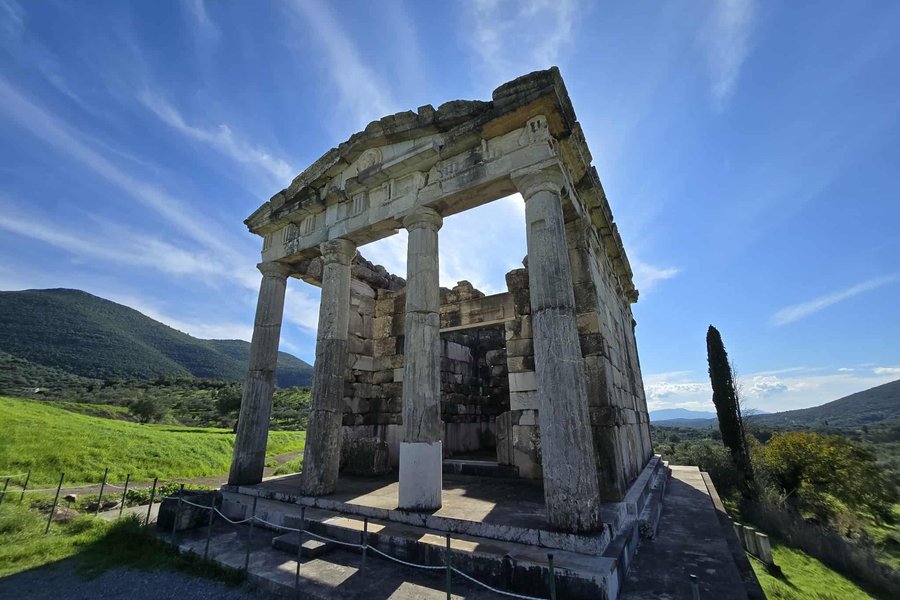
The Peloponnese Region of Greece is an archaeologists dream location. Already inscribed with 5 locations of great importance, this location equals those. On the tentative list since 2014 it still holds its weight amongst these sites and should be on your visit list. I am not sure why it has not been inscribed to date.
I was contemplating not even visiting, however had a spare day with the hire car and rather than tick off more tentative Medieval Bastioned Fortifications of Greece or Ancient Theatres of Greece (visited a few now) we visited this singular location as a side trip as we were travelling up from Sparti to Patras to ferry out of Greece. I am so glad we did; it is seriously underrated.
15 Euro entry fee to visit, which is middle of the road for prices across Greece to visit these sites, however you do get your money's worth at this site with the amount of ruins and large footprint across the protected area. There is no 'museum' part of the complex, the 'museum' is the ruins themselves with a variety of information boards explaining the site and area. It is a dog friendly location, and we were only asked if our dog was vaccinated, which is a first for us. We spent about 3 hours on the site itself and involved a fair bit of walking and exploring, so if visiting, make sure you take some water with you.
With a lot of the archaeological sites I …
Keep reading 0 comments
While there are many bluffs on the Great Plains where bison were hunted, here they have an excellent site for learning about the hunters, their skill and their culture. I learned far more about traditional bison hunting from the interpretive center’s film than from any other site visited or book read. Once you realize the bravery and cunning tactics of the hunters, then you gain a real appreciation and respect for Blackfoot culture. The bison hunt is fundamental to the tribe, as the soles of their feet turned black after walking through the burnt prairie grass.
There is much more to the modern visitor center which takes you to the top of the bluff. Study the Winter Count Robe, a traditional record of the main event of each year in tribal history. See how dogs were outfitted with travois before horses were acquired. While there are far more authentic artifacts in places like the Plains Indian Museum in Cody Wyoming, I found the exhibits here to be effectively educational.
Keep reading 0 commentsmarc Rouserez
La Palma island in winter 2024 - Santa Cruz
Conjunto Histórico de Santa Cruz de La Palma (Removed from tentative list)
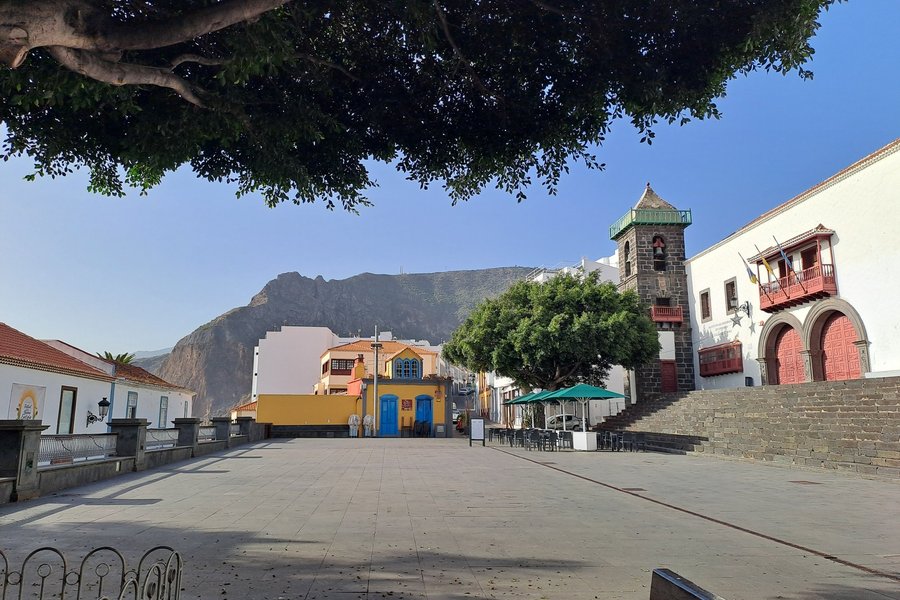
Having thoroughly enjoyed our visit to the islands of Tenerife and La Gomera in winter 2023, we decided to repeat the experience on the island of La Palma, still in the Canary Islands archipelago, in winter 2024. We were not disappointed. The island is even more beautiful and varied than the island of La Gomera, and you need a whole week to get around it and appreciate the different landscapes, from the salt flats by the ocean to the pine forests and the volcanoes at altitude.
The State Party, Spain, withdrew the nomination of the island's capital, Santa Cruz de La Palma, from the tentative list in 2025. Why? It would appear that there is no official explanation. Could this be to highlight a new proposal concerning the rock engravings on the island proposed in the same year, or because the entire island has already been listed as a biosphere reserve since 1983? We'll probably never know, but it didn't detract from our enjoyment of visiting the city. A day is enough to see the city, dance with the Palmeros, and climb up to the sanctuary. In winter, it's not very crowded.
And what would have been the site selection criteria?
We joyfully and tangibly experienced criterion ii concerning the exchange of influences between European and American cultures when we happened to find ourselves at a Cuban music concert where Palmeras were dancing in front of a replica of Christopher Columbus's caravel, the Santa Maria! That said, it is accepted …
Keep reading 0 comments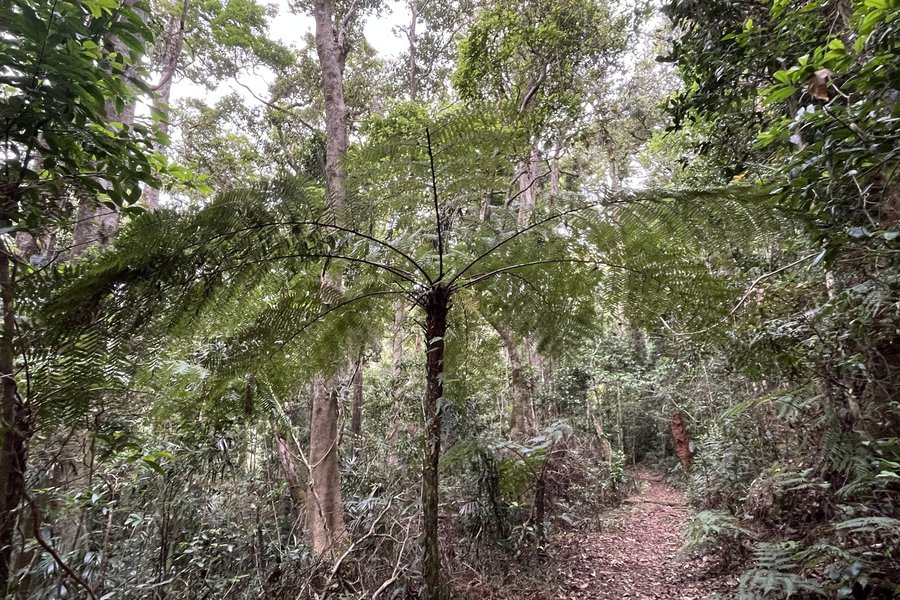
This one I bailed out on during my 2011 RTW trip. Just too many forests on the Australian World Heritage List! But I had to finish it now while being in Queensland. It’s a vast site with an unknown number of components and there is little official UNESCO info available.
As I had been to the Wet Tropics of Queensland a few days before, I wondered what the differences were between the two sets of Rainforests from Gondwanan times. Google’s Gemini says: The fundamental difference between the two sites lies in the type of rainforest they preserve. The Gondwana Rainforests are predominantly subtropical and temperate rainforests. The Wet Tropics of Queensland, as its name suggests, is characterized by tropical rainforest. This climatic and ecological difference is reflected in their unique biodiversity. The Gondwana Rainforests are a sanctuary for ancient plant groups like primitive conifers and ferns, and are a significant center for the evolution of Australia's songbirds. The Wet Tropics, on the other hand, boasts an exceptionally high concentration of primitive flowering plant families, many of which are endemic to the region.
For my visit, I chose Lamington National Park. I stayed overnight in the town of Nerang (a suburb of the Gold Coast), so the next morning it was only a 45-minute drive to the Binna Burra entrance. I tried to be early, hoping to encounter wildlife along the road. Seeing koalas in the wild was high on my wish list for this Australia …
Keep reading 0 comments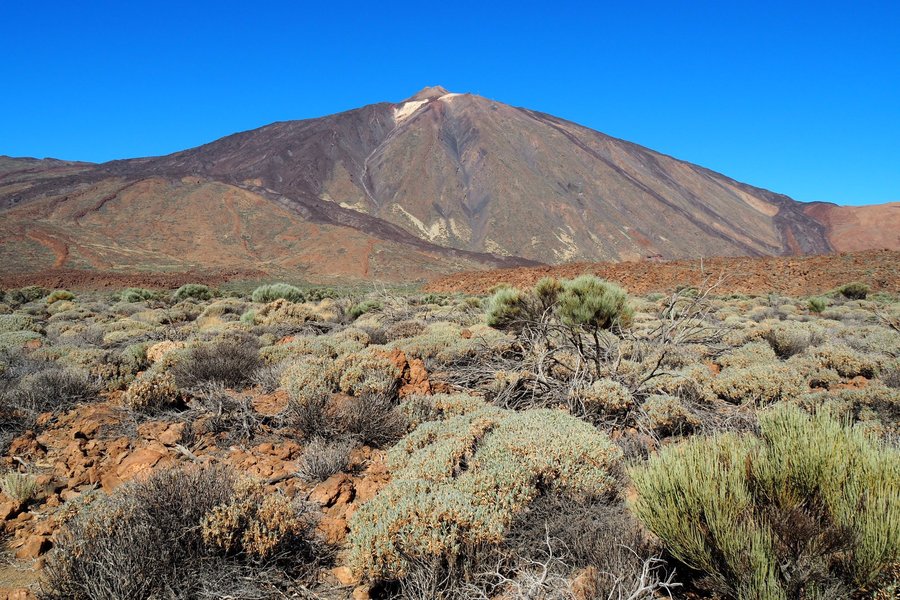
Like Hubert, we fled the cold and damp of the Belgian capital in the winter of 2023 to warm up in the Canary Islands. We left our hotel in the hills above Los Cristianos by local bus to Vilaflor via the TF51 road, where we boarded bus number 342 to El Teide National Park, on the TF21 road.
We were eager to see the spectacular landscapes that WHS Traveller members have already described, and it is very interesting to take the local bus to see at your leisure the different layers of vegetation revealed before your astonished eyes as the bus climbs and the difference in altitude increases until reaching the gigantic caldera in the national park.
We got off the bus at the foot of the cable car hoping to go to the summit without a reservation, but we had to give up as everything was already booked for the day. So we decided to walk to the Canada Blanca Visitor Centre before stopping at Roques de Garcia. I think all the WHS Traveller members took more or less the same route... splendid, and as they say, not as deserted as it first appears! The variations in color, from anthracite to rust through a whole range of yellows with the tender greens of the vegetation, are breathtaking!
Wandering through this vast, 360° desert landscape, surrounded by almost complete solitude, was pure bliss. The word that comes to mind to describe the beauty of the national park is: majestic. Awe-inspiring …
Keep reading 0 comments
We took a local bus from the hills above Los Cristianos to Santa Cruz. The outskirts of Santa Cruz and the bus station weren't very appealing, so we didn't linger and took a bus directly to San Cristóbal de La Laguna. The old town is easily accessible on foot from the bus station via a gently sloping main avenue.
The pedestrianized city center is full of well-maintained monuments, and it's very pleasant to stroll around. Our visit took a whole day, including a stop at a restaurant and another at a café terrace behind the cathedral.
We were enjoying a typical local drink: barraquito (a coffee foam) when I suddenly heard a whistle coming from the bell tower. I jumped out of my chair, already hoping to be able to mark two cells on my Excel spreadsheet from red to green: on the one hand, the WHS of San Cristobal de la Laguna, and on the other hand, Silbo, the whistled language of the island of La Gomera, inscribed on UNESCO's Intangible Cultural Heritage list, but I couldn't find any whistler and sheepishly returned to the table to finish my coffee in peace.
We explored the city in a fairly methodical way, first strolling along the Cale Obispo Rey Redondo to the Church of the Conception, stopping at the Santo Domingo de Guzman Convent (Dominican, 16th century) (photo), and the patio of the Hotel Aguere where an artisans' fair was being held. Leaving the courtyard of the House of the …
Keep reading 0 comments
There doesn’t seem to be much variety in how to do K’gari, the only choice to make is whether to stay overnight or not. As a second day would bring mostly extra beach time or swimming time in one of the lakes, I did the island on a day tour from Hervey Bay, taking the ferry from River Heads at 8.30 a.m. and back at 5.15 p.m.
The remarkably long island can already be seen from the mainland, although the ferry ride still takes 45 minutes. There were about a dozen cars aboard, plus some 50 people. On the island, we were joined by an extra load of those staying in one of the resorts. Three large 4WD buses were filled up – and this still wasn’t the high season. Several private 4WD cars (the only ones allowed on the exclusively sandy roads on the island) had gone ahead of us already, and within 10 minutes or so one had got stuck in the sand. It was pulled out by another car, and fortunately, this was to be our only delay during the day.
The thing that most surprised me about the island is how forested it is. Most photos depict its 75 mile beach, which makes you think the whole island looks like that. But it is actually covered in forest, some rainforest even. And it all manages to grow on sand. Until WH status in 1992, it was used for logging and the Central Station former logging camp …
Keep reading 0 comments
It seems that everyone managed to reach the summit of Taishan — except us. The weather was temperamental during our only full day there, with persistent rain and fog. Despite our effort to drive 16 kilometers from Hongmen (Red Palace Gate) to the other visitor center where the cable car starts, we arrived only to learn that service had been suspended due to poor weather, leaving many tourists stranded. We quickly decided to return to Hongmen and make the most of what could still be visited nearby. Fortunately, the Red Palace Gate and its adjoining temples and natural sceneries offered a rewarding experience given the conditions. Later in this review, I’ll also describe Dai Miao, the Temple to the God of Taishan, which has not yet been covered in previous reports.
Lower Section of Taishan around Hongmen
Staying overnight near Hongmen allowed me to witness where the pilgrims’ night hike begins. On the recommendation of Zos, I went there around 10 p.m. and watched hikers —some even with their dogs— preparing to conquer Mount Tai on foot. The area was already bustling with people warming up.
Hongmen is home to four ancient gates, starting from Yitianmen (First Door of Heaven) and extending to the Red Palace Gate, which also serves as an overpass (Flying Cloud Loft) connecting two historic Taoist temples: Puzhao Temple (originally from the Northern and Southern dynasties) and Hongmen Temple (Ming dynasty). The latter is dedicated to Bixia, the daughter of the god of Taishan. A …
Keep reading 7 comments
The Dhayah landscape nomination mentions the lagoon, the palm gardens, a hill fort, tombs and mountain villages. The centre of it seems to be the fort on a 70m high hill, so this is where we headed. Luckily google maps sent us there on a weird unpaved road. Clearly not correct, but it gave us the best views of the fort. The fort itself is, as common in this area, completely reconstructed to a degree, it looks fake. It has a visitor centre with opening times (daily 08:00-19:00) and free entry.
From the top you are able to spot some of the other elements. The palm gardens with the falaj are set around the fort hill, but seems to be in commercial use and walled off. The lagoon is part of the modern city of Dhaya and we did not bother to go there. And of course, Dhayah also mentions old graves. Like Hatta, Faya, Mleiha and Shimal. You get the gist. According to the UNESCO website, four of these graves are planned to be made accessible by creating an Archaeological Park, I didn’t find anything about its existence so far. UAE seems to push this site for the near future, so it might become more interesting. The current visitor experience is not impressive.
Keep reading 0 commentsTwobaconsandaboston
Finally visited the Trifecta
Daphni, Hosios Loukas and Nea Moni of Chios (Inscribed)

We visited the Monastery of Daphni in a tour back in 2017, which felt like we only touched the site at the time, so it was good to go back in October 2025 and revisit this site, but also to visit the other 2 sites included within this inscription. My review will highlight from a visitor perspective noting the previous reviews on the history and OUV of the sites in question.
We had a hire car to visit all these sites, so did not have to rely on public transport. The only site that charged an entrance fee was the Monastery of Hosios Loukas and this was a very reasonable and infact quite cheap compared to other sites across Greece, being 5 Euro only.
Monastery of Hosios Loukas.
We were staying in a little coastal town, Antikyra, and visited on a weekday morning. It is about a 30 min drive on good, sealed roads. The Monastery has a huge carpark which looks like it can accommodate numerous large coaches as well. It is certainly set up for large tourism. The Monastery area is very much larger than the other 2 inscribed sites and has a number of exhibitions and a small museum attached. Numerous information boards provide a good visitor experience. Photography was allowed throughout. It is located high on a hill and not within a community (village) and commands a great view. There are a couple of small artesian shops and cafes just outside the monastery on a courtyard …
Keep reading 0 comments
The nomination file for Hatta is rather confusing to me. The location marker is actually in Oman, there’s talk about geological formations, despite it being a cultural site and even the (modern) dams are mentioned. I guess, the dams are rather anker points to show, what is part of the area. A great portion of the file is dedicated to the Hatta tombs, that were built there since the Bronze Age. However, I did not find anything about where these tombs exactly are and if you can visit them. Luckily, the file also talks about primitive stone houses and exactly those you can find in the Hatta Heritage Village. There is still some construction work going on in the village and the fort is one of these typically overdone Arab sites, but there is still a cluster of traditional stone houses on the slope of the hill with the watch tower behind the village. It appears, they will be kept in their current state, which make it look like a real archaeological site.
There is also a falaj (also mentioned in the nomination file), that can be seen from the other watch tower, close to the parking lot.
In general, our visit was rather pleasant. The houses were nice and unexpected. I can understand, that the emirate of Dubai tries to push this. If they go forward with this nomination, I hope the make the tombs accessible and this might become a worthy addition to the list.
Keep reading 1 comment
Much has changed since the last review from 2023. The heritage village is now almost fully restored and open for business. It seems, they have big plans to promote this. There are 2 big parking lots on either entrance, plus a visitor centre, viewing platform, children’s playground, and the reconstruction of a souk, that might serve for shops. The only thing missing was visitors. Apart from the 3 of us, we saw around 4 more tourists. The rest was either part of a film crew or worked there on finishing the reconstructions.
I really liked walking around the village. It’s a large area with several open houses and a fort to explore. I do however have my doubts about the OUV. Much like Khor Dubai, it is so heavily reconstructed, that it rather looks like a Disneyland version of an old pearling village. They left some untouched structures now and then, where you can see the coral stone used for the construction of the houses. But most of them look brand new. Good enough for a visit, but probably not good enough for the WH list.
Keep reading 0 comments